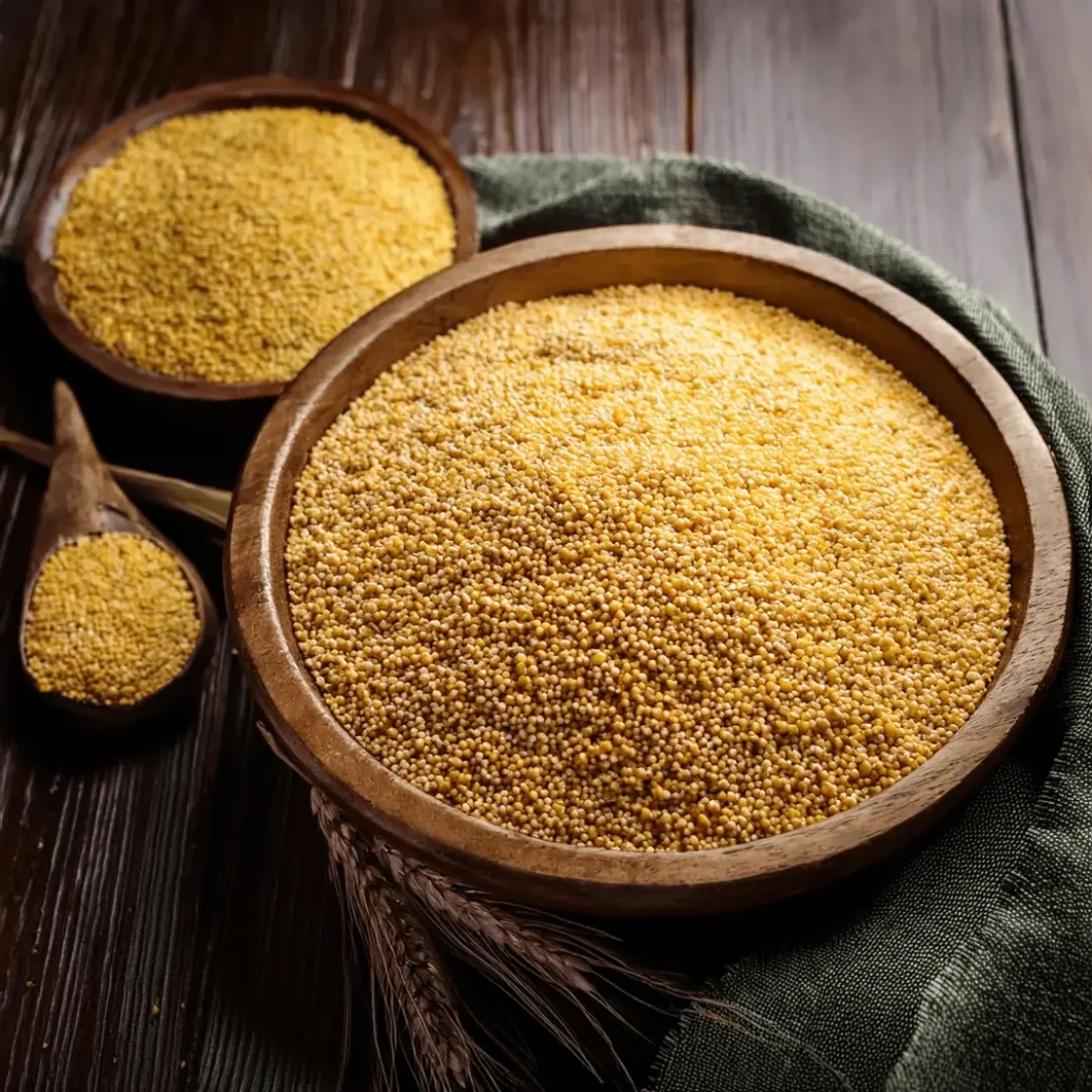Millets, often overshadowed by more common grains like rice and wheat, are ancient crops packed with nutrients and functional health benefits. These small, nutrient-dense grains have nourished civilizations for thousands of years and are now making a grand comeback as a superfood. Let’s explore why millets deserve a prime spot on your plate, their health benefits, bioavailability, and delicious ways to incorporate them into your diet.
Why Choose Millets?
Millets are not just an alternative to mainstream grains; they are nutritional powerhouses that offer a range of health advantages.
Functional Benefits of Millets
- Rich in Nutrients: Millets are high in protein, dietary fiber, and essential micronutrients like iron, calcium, and magnesium. Their nutrient density supports overall health and vitality.
- Low Glycemic Index: Millets release glucose slowly into the bloodstream, making them ideal for managing diabetes and preventing sugar spikes. They provide sustained energy levels throughout the day.
- Gut Health Booster: The high fiber content aids digestion, alleviates constipation, and fosters a healthy gut microbiome.
- Gluten-Free Alternative: Millets are naturally gluten-free, making them an excellent option for individuals with gluten intolerance or celiac disease.
- Antioxidant Properties: Loaded with bioactive compounds such as phenolic acids and flavonoids, millets combat oxidative stress and reduce inflammation, contributing to long-term health.
Enhancing Nutrient Absorption
While millets are nutrient-rich, certain factors can affect nutrient absorption and bioavailability. Here’s how to maximize their benefits:
- Phytates and Tannins: These antinutritional factors can inhibit the absorption of minerals like iron and calcium. Simple techniques like soaking, fermenting, or sprouting millets can reduce these compounds.
- Cooking Methods: Traditional methods like boiling or pressure cooking improve the digestibility of millets while preserving nutrients.
- Pairing with Vitamin C: Consuming millets with vitamin C-rich foods like citrus fruits or tomatoes enhances iron absorption.
Creative Millet Recipes for Every Meal
Millets can be adapted into various recipes to suit your palate and lifestyle. Here are some innovative ideas:
- Breakfast Boost: Millet Porridge
- Ingredients: Foxtail millet, almond milk, honey, seasonal fruits, and nuts.
- Method: Cook foxtail millet in almond milk until creamy. Sweeten with honey and garnish with fresh fruits and nuts for a nourishing start to the day.
- Wholesome Lunch: Millet Khichdi
- Ingredients: Barnyard millet, moong dal, vegetables, spices.
- Method: Cook millet and dal with your choice of veggies. Season with tempered spices for a comforting, nutrient-packed meal.
- Snack Time: Millet Energy Bars
- Ingredients: Ragi (finger millet) flour, dates, coconut, and ghee.
- Method: Roast ragi flour, mix with blended dates and coconut, shape into bite-sized balls, and enjoy a healthy, on-the-go snack.
- Dinner Delight: Millet Dosa
- Ingredients: Bajra (pearl millet) flour, rice, urad dal.
- Method: Ferment a mixture of bajra flour, rice, and urad dal. Prepare crispy dosas for a light yet satisfying meal.
Incorporating Millets into Your Daily Diet
- Replace rice with millet varieties like kodo or foxtail in your main meals.
- Use millet flour to create breads, pancakes, or cookies.
- Add popped millets to trail mixes, granola, or salads for added crunch and nutrition.
- Explore millet-based desserts like pudding or laddoos for a guilt-free treat.
A Sustainable and Nutritious Choice
Millets are not just good for your health; they are also a sustainable choice for the planet. These hardy crops require minimal water and thrive in arid conditions, making them environmentally friendly. By incorporating millets into your diet, you are embracing a healthier lifestyle while contributing to sustainable agricultural practices.
Linking to Additional Resources
For more information on millet varieties and their uses, visit Millet India. To explore the latest research on millets and health, check out this study on millet benefits.
Related Topics
- 10 Reasons to Choose Whole Grains Over Refined Grains
- How to Maintain a Balanced Diet With Ancient Grains
Conclusion
Millets represent a timeless solution to modern health challenges. Their nutritional value, versatility, and environmental benefits make them a vital addition to any diet. Start experimenting with millets today and rediscover the joy of wholesome eating. These golden grains hold the promise of a healthier, more sustainable future—one meal at a time.









